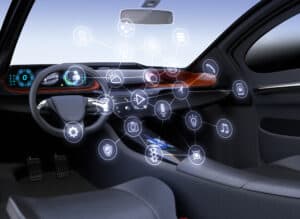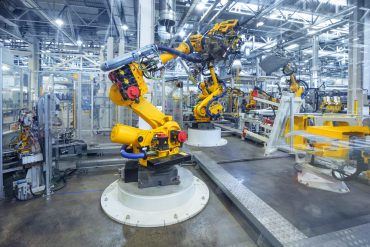
EV automakers must put themselves in a position where they can quickly incorporate new technologies while designing and modifying their line of vehicles.
Automakers have a long tradition of incorporating new technology into their vehicles. In recent years, that has included adding GPS, infotainment systems, autonomous capabilities, processor-controlled safety features, powered windows, seats, doors, and more. However, as electric vehicles (EVs) become a larger percentage of the total number of vehicles produced every year, EV automakers will need to make added technology a priority going forward.
Why? Technology is the new differentiator with EVs. Companies are no longer competing on the driving range. Automakers offering or introducing EVs are trying to lure customers by adding things like in-car projectors, refrigerators, and more that have never been included in cars before.
And there are great regional differences emerging. In China, some have noted that the EV market is similar to the cellphone market, where buyers are more interested in gadgets and entertainment. In contrast, consumers in the EU are more interested in advanced functions.
Upending manufacturing from end-to-end
Bundling more and different technologies into EVs forces changes throughout the entire end-to-end auto manufacturing process. Vehicle design is radically different. Not many manufacturers have ever included refrigerators or in-car projectors before. Sourcing raw materials and parts is an all-new adventure. New suppliers and Tier 1 partners must be part of the process. And many elements of the manufacturing process must be re-worked.
Some industry experts have noted that besides just modifying traditional approaches to these areas, there are much more fundamental changes happening in the industry.
One change relates to design philosophy. The issue was put into context in a recent article that noted there is a stark different between the German and Chinese EV markets. The German system is coming from the mechanical side of the house, the bottom-up. Designers and engineers typically start with a focus on horsepower or range. In contrast, Chinese companies are coming at it from a digital, top-down approach. So, Chinese EV automakers start with the cockpit and interior and then design out.
Another major change is the need to use new semiconductor materials to meet the power demands of EVs. For decades, automakers have used new materials to make cars safer and lighter (leading to better fuel economy or an improved driving range on a set charge). The industry switched from metal to plastics and composites. Current cars are, on average, 50% plastic by volume.
A similar disruptive change is now beginning with respect to the core materials for EV automotive electronics. Due to the enormous power demands for EVs and their internal systems, silicon-based processors are no longer enough. The same issue is impacting data centers. And in both markets, OEMs and manufacturers are looking for alternatives.
“An industry which has long relied on silicon technologies is being both challenged and enabled by devices fabricated from new materials,” said Callum Middleton, Senior Analyst for Semiconductor Components at the market research company Omdia. (Middleton’s comments were made available in a press release.) “The development of both gallium nitride (GaN) and silicon carbide (SiC) power devices began in the previous century, but their technology maturity has matched with the sustainability movement, and devices manufactured from the new materials offer significant efficiency gains in our energy-hungry world.”
Middleton credits Tesla’s adoption of SiC devices in 2018 as a turning point that “catapulted the technology from laboratories and test designs into the mainstream.” Since its initial use, more manufacturers have been looking at these newer materials to help improve the performance, charging speed, and range of their EVs.
See also: Virtualizing the Automated Assembly Line
How EV automakers can keep pace with technology changes
Consumer demands and preferences for EVs change rapidly. As such, auto manufacturers must put themselves in a position where they can quickly design and modify vehicles. Those designs must be quickly tested and validated. In today’s world, that means running digital simulations to prove out those new designs.
Once that phase is done, the final design must be ported to the manufacturing environment. They must quickly identify which elements of existing work cells and assembly lines to retain, what new elements must be added, and how to integrate the entire operation. Assembly line virtualization and digital twins can help ensure the manufacturing environment is optimized and made safe even before a single piece of equipment is installed or moved.
While these things are taking place, manufacturers must revamp their supply chains, taking on new suppliers and accommodating the logistical and safety requirements of any new parts or materials.
See also: Why Automakers Need Intelligent Manufacturing Operations
A final word on EV manufacturing
The bottom line is that designing and producing EVs is a different beast compared to traditional internal combustion engine cars.
To compete in this marketplace, manufacturers need a product engineering environment that assists engineers in accelerating EV design, verification, and validation. By minimizing the amount of time required to transform EV designs into production units, automakers can expand their portfolio to include an electric vehicles option for its customers.







